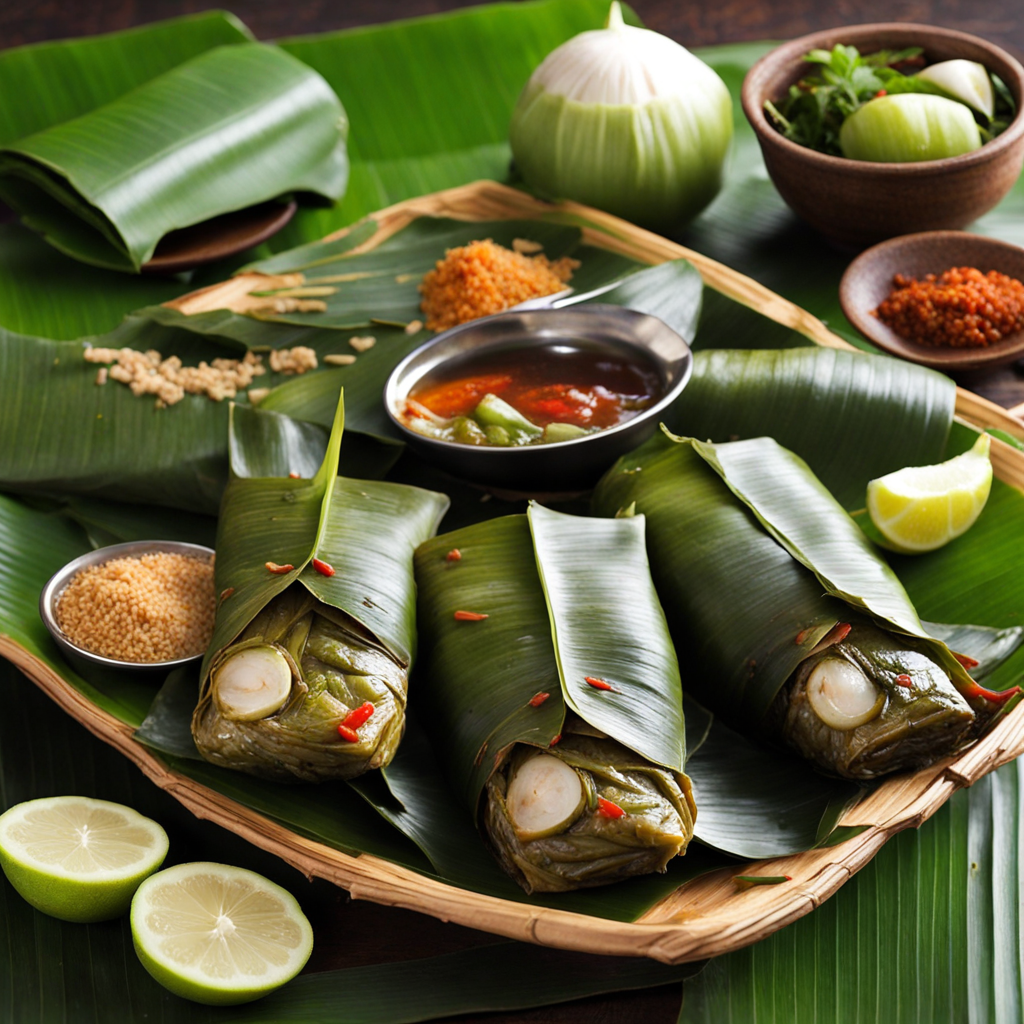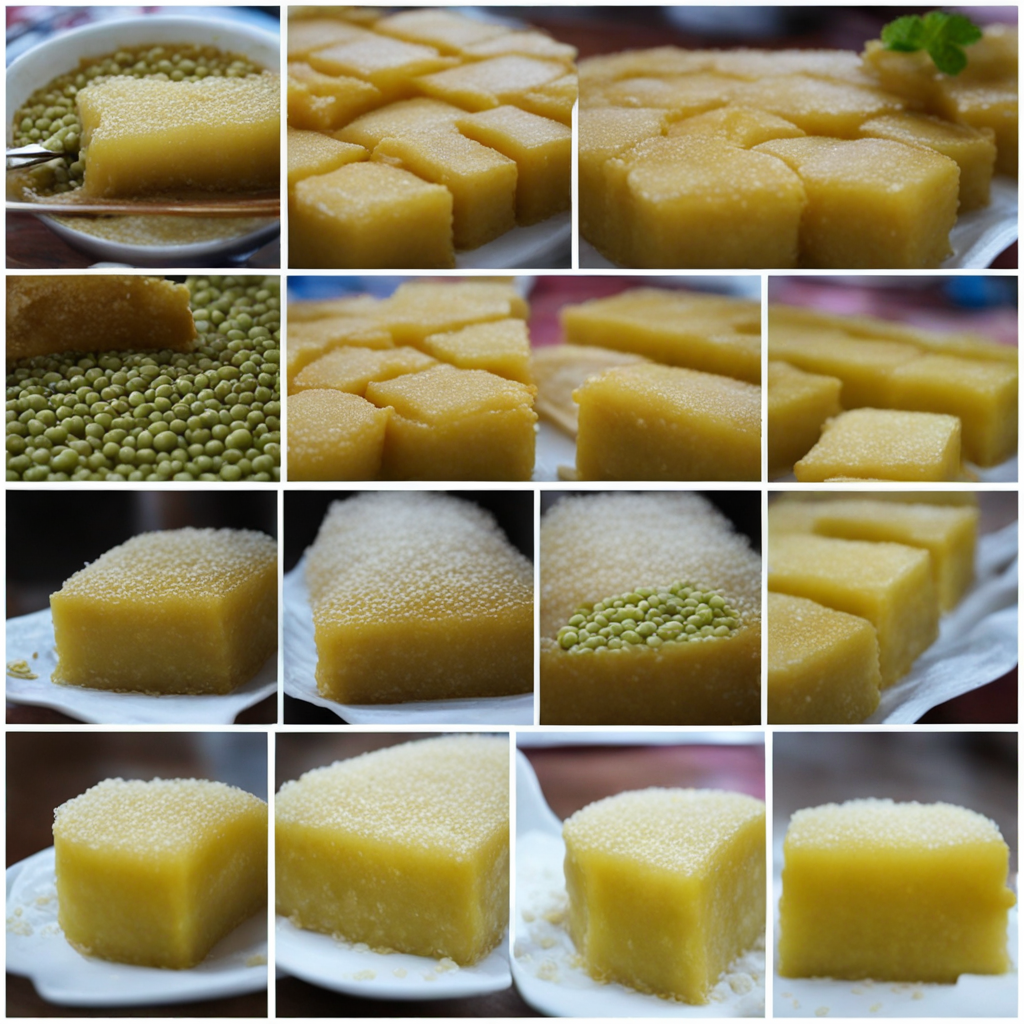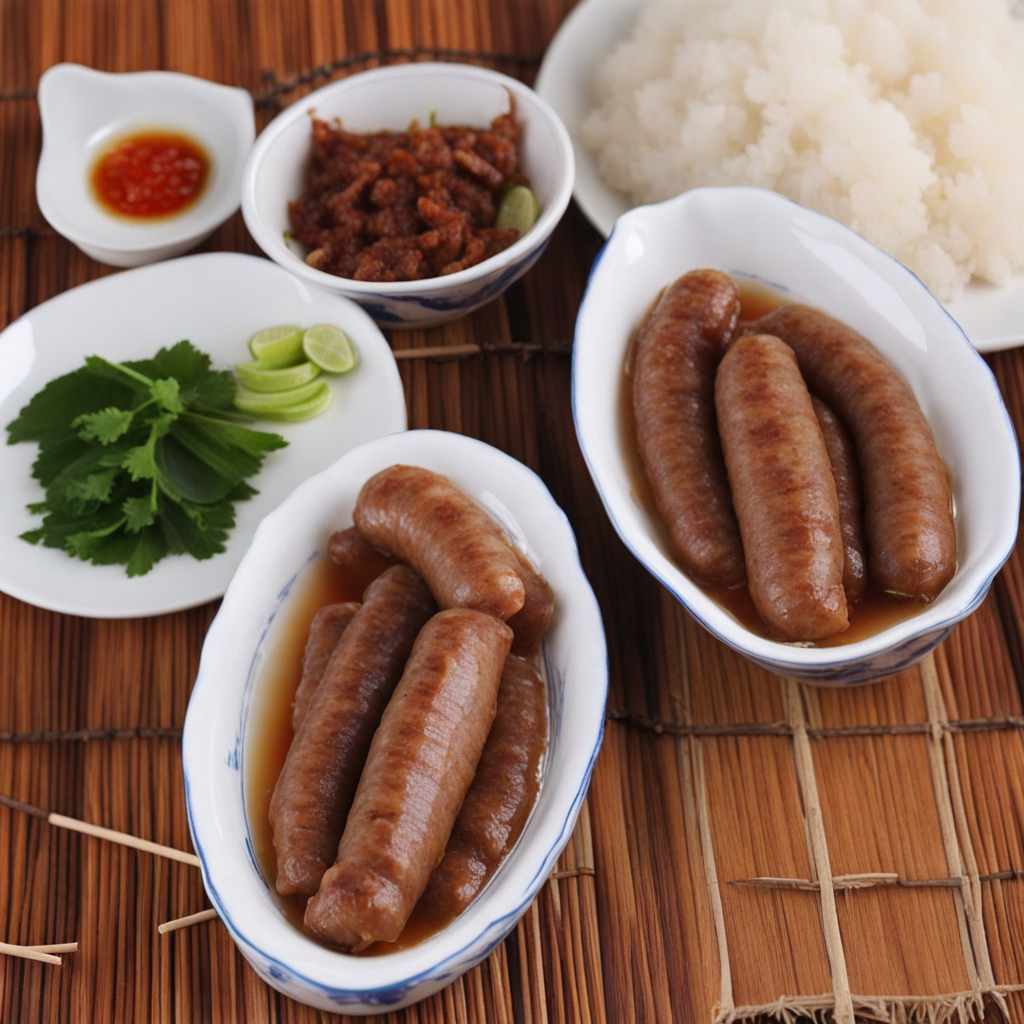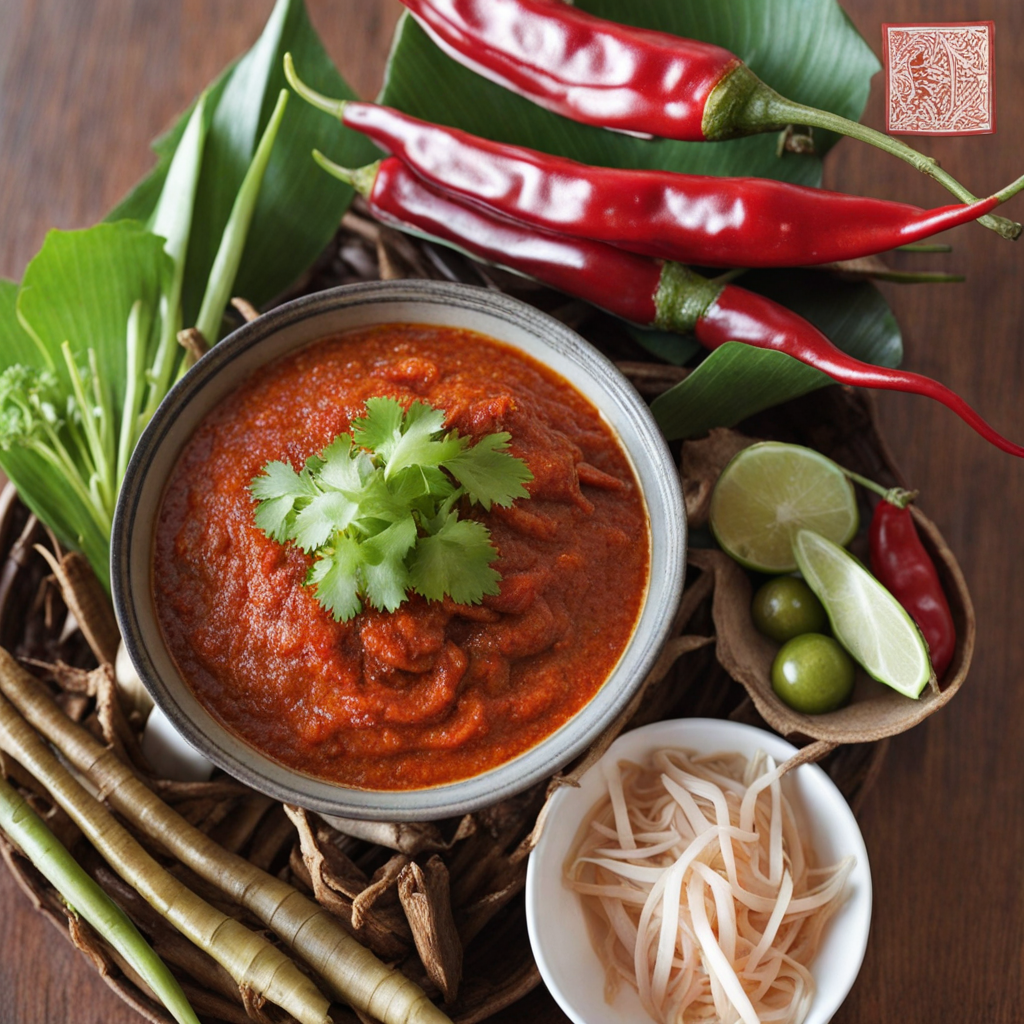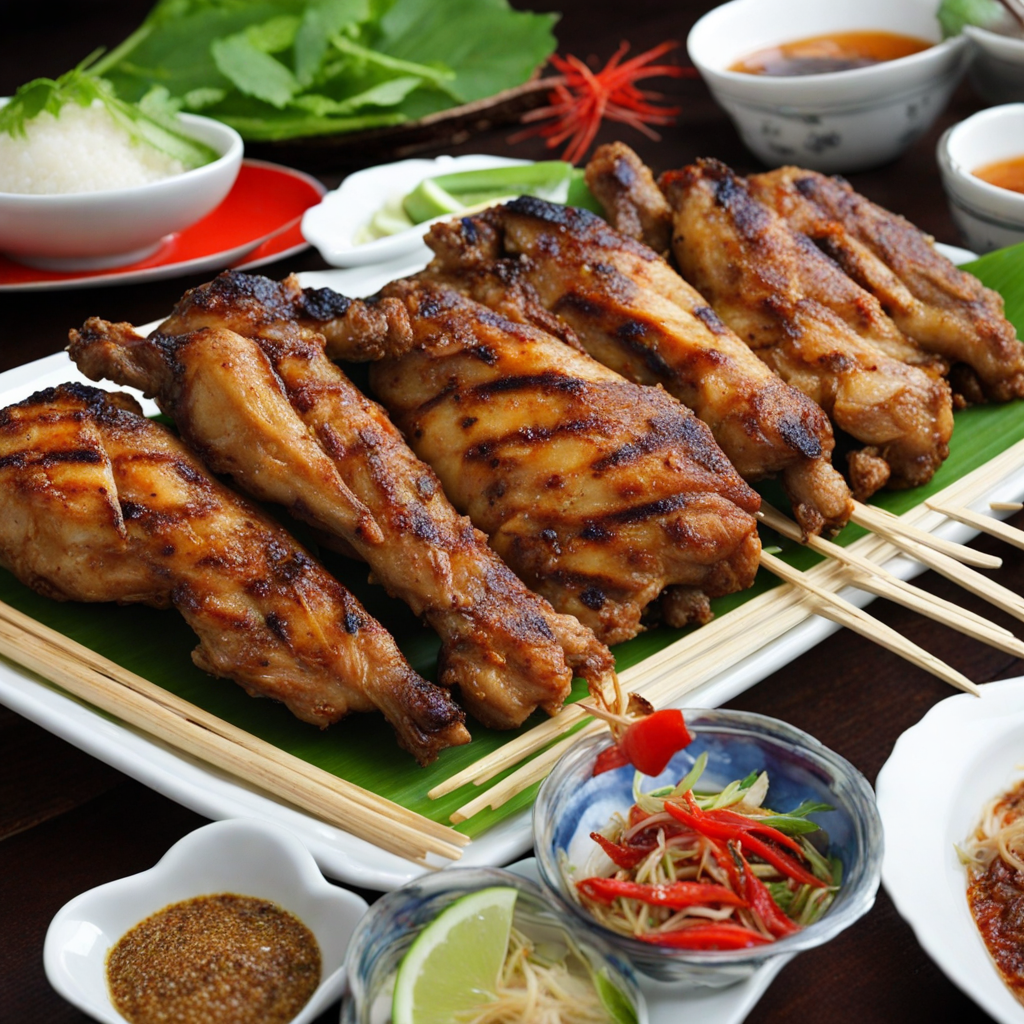Mok Pa
Mok Pa is a traditional Lao dish that showcases the vibrant flavors and culinary techniques of Laos. This delightful dish features fish, commonly tilapia or catfish, that is marinated in a fragrant mixture of lemongrass, garlic, shallots, and kaffir lime leaves. The marinade is often enhanced with a splash of fish sauce and a hint of chili, creating a balance of savory and aromatic notes that truly encapsulate the essence of Lao cuisine. The fish is then wrapped in banana leaves, which not only helps to retain moisture but also imparts a subtle earthy flavor during the cooking process. Cooking Mok Pa typically involves steaming the wrapped fish, allowing the flavors to meld beautifully while keeping the fish tender and moist. The dish is often served alongside sticky rice, which is a staple in Lao meals, making it perfect for scooping up the flavorful fish and its accompanying sauce. The presentation is rustic yet inviting, as the banana leaves are opened at the table to reveal the beautifully cooked fish, often garnished with fresh herbs and lime wedges that add a burst of freshness. What makes Mok Pa truly special is its versatility. While fish is the star ingredient, variations can include other proteins such as chicken or tofu, allowing for a range of textures and flavors. This dish is a celebration of the natural ingredients found in Laos, and each bite offers a unique taste experience that transports you to the heart of Southeast Asia. Whether enjoyed in a bustling market or a cozy home setting, Mok Pa is a must-try for anyone eager to explore the rich tapestry of Lao culinary traditions.
How It Became This Dish
Origin of ໝົກປາ ໝົກປາ (mok pa) is a traditional dish from Laos that reflects the country's rich culinary heritage, deeply intertwined with its geography and culture. The dish consists mainly of fish, typically river fish such as tilapia or catfish, marinated in a mix of spices and herbs, wrapped in banana leaves, and then steamed or grilled. The origins of mok pa can be traced back to the ancient practices of the Lao people, who have relied on the bountiful waters of the Mekong River and its tributaries for their sustenance. Fishing has been a fundamental part of life in Laos for centuries, and mok pa is a direct reflection of this longstanding relationship with the river. The use of banana leaves for wrapping food is also significant, as it showcases the resourcefulness of the Lao people. The leaves not only impart a subtle flavor to the fish, but they also serve as a natural and environmentally friendly cooking vessel. This practice highlights the connection between the people and their natural surroundings, showcasing a sustainable approach to food preparation that is prevalent in many traditional cuisines around the world. Cultural Significance Mok pa is more than just a dish; it embodies the communal spirit of Lao culture. Traditionally, it is prepared during family gatherings, festivals, and celebrations, where the act of cooking and sharing food serves as a bonding experience. In Laos, food is a central element of hospitality, and serving mok pa to guests signifies respect and warmth. The dish is often accompanied by sticky rice, which is a staple in Lao cuisine, further emphasizing the importance of communal dining. The preparation of mok pa also involves a variety of local herbs and spices, such as lemongrass, galangal, and kaffir lime leaves, which contribute to its aromatic flavor profile. These ingredients are not only integral to the dish itself but also reflect the diversity of the Laotian landscape. The use of fresh, locally sourced ingredients is a hallmark of Lao cooking, reinforcing the cultural connection to the land and its resources. As such, mok pa can be seen as a representation of Lao identity, showcasing the unique ingredients and culinary techniques that have been passed down through generations. Regional Variations While the core elements of mok pa remain consistent across Laos, regional variations have emerged that highlight local ingredients and preferences. In northern Laos, for example, the dish may incorporate more herbs and spices, reflecting the region's colder climate and the availability of different flora. In contrast, southern Laos may feature a sweeter flavor profile, influenced by the use of coconut milk or palm sugar in the marinade. These regional distinctions not only illustrate the adaptability of mok pa but also the vibrant culinary tapestry of Laos as a whole. Additionally, the method of cooking mok pa can vary. In some areas, it is traditionally steamed over a pot of boiling water, while in others, it is grilled over an open flame. Each cooking technique imparts its own distinct flavor and texture to the dish, further enriching the experience of enjoying mok pa. The versatility in preparation methods also allows for variations in presentation, as some cooks may choose to serve the dish in the banana leaves themselves, while others may transfer the cooked fish onto a plate for a more refined presentation. Modern Influences and Globalization As Laos continues to evolve in the face of globalization, mok pa has also undergone transformations that reflect contemporary culinary trends and influences. The introduction of modern cooking techniques and appliances has made preparing mok pa more accessible, allowing for variations such as baking or even frying the fish. Additionally, the global interest in health-conscious eating has led to an increased popularity of mok pa, as it is considered a nutritious and flavorful dish. Restaurants in urban areas, particularly in Vientiane and Luang Prabang, have begun to reinterpret mok pa, incorporating ingredients like quinoa or exotic spices that cater to a more international palate. This fusion of traditional and modern elements has sparked a culinary renaissance, where chefs experiment with mok pa while still honoring its roots. The dish has also found its way onto international menus, allowing more people to experience the flavors of Laos and fostering a greater appreciation for Laotian cuisine. Preservation of Tradition Despite the influences of modernity, there is a strong movement within Laos to preserve traditional culinary practices, including the preparation of mok pa. Many families continue to pass down their recipes and cooking techniques, ensuring that the cultural significance of the dish remains intact. Culinary schools and workshops are being established to teach younger generations about the importance of traditional foods, promoting a sense of pride in Lao cuisine and its cultural heritage. Moreover, the growing interest in “farm-to-table” dining experiences has revived the traditional aspects of mok pa, as diners seek authentic and locally sourced meals. This trend has encouraged chefs to reconnect with local fishermen and farmers, reinforcing the bonds between communities and their food systems. The sustainability of mok pa, both in terms of ingredients and cooking methods, resonates with modern diners who are increasingly conscious of their food choices. Conclusion In conclusion, mok pa is a dish that encapsulates the essence of Lao culture, showcasing the interplay between tradition and modernity. Its origins in the fertile waters of the Mekong River, combined with its communal significance and adaptability, have allowed mok pa to thrive through the ages. As Laos continues to navigate the complexities of globalization, the preservation and celebration of mok pa will ensure that future generations can enjoy this flavorful testament to their heritage. The dish stands as a delicious reminder of the importance of food in bringing people together and fostering a deeper connection to one’s cultural roots.
You may like
Discover local flavors from Laos


